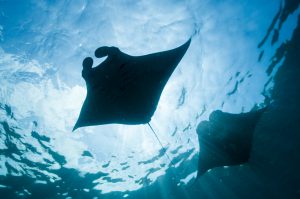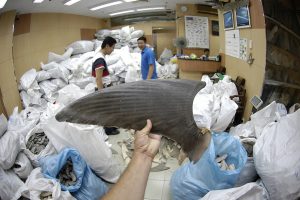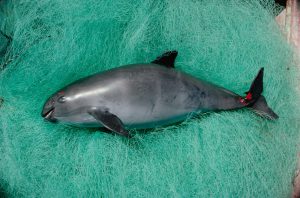Udin Umar is repairing his gillnets. Yesterday, he caught four spinetail devil rays and a bucket of small selar fish in the tropical waters off his home island of Solor in southern Indonesia.
Like many others in his community of Lamakera, Umar used to be a manta ray hunter. He was forced to hang up his harpoon in 2014 when Indonesia banned both the catching of these ocean giants and trade in their parts.
He remembers when landing just one manta would fetch three million Indonesian rupiah (USD$212), enough to pay off his debts and fund his children’s education. He doesn’t mention that at one point he could have earned double that by selling the gills, used by mantas to filter plankton from the water.
“Before it was banned, I could catch 20 in one season,” he says. “We cannot hunt manta rays any more. We’d get arrested for it.”
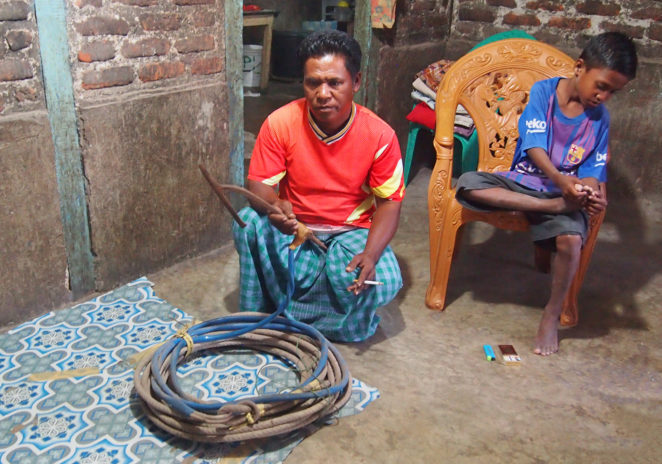
Protecting the mantas
Indonesia’s 2014 legislation gave full protection throughout their life cycles to both species of manta – the giant manta (mobula birostris) and the reef manta (mobula alfredi). It became illegal to use any part of the animal even when accidentally caught, except for “research and development”. It effectively created the world’s largest manta ray sanctuary, with fishing banned across Indonesia’s Exclusive Economic Zone, an area of ocean about six million square kilometres in size.
The move was prompted by a sharp decline in global manta populations caused by overfishing; the two species were listed as vulnerable on the International Union for Conservation of Nature’s (IUCN) red list in 2011. More specifically, it followed a 2013 decision by the Convention on International Trade in Endangered Species of Wild Fauna and Flora (CITES) to add mantas to Appendix II, which requires member countries to strictly regulate trade in the species.
Mantas are the largest of the mobulid ray family. The giant manta has a wingspan that can reach more than seven metres. Like other large marine species, they live a long life and have slow reproductive rates, giving birth to only one or two pups every 2-5 years. According to Mochamad Iqbal Herwata Putra of marine conservation charity the Misool Foundation, this makes them particularly vulnerable to “high fishing activity”.
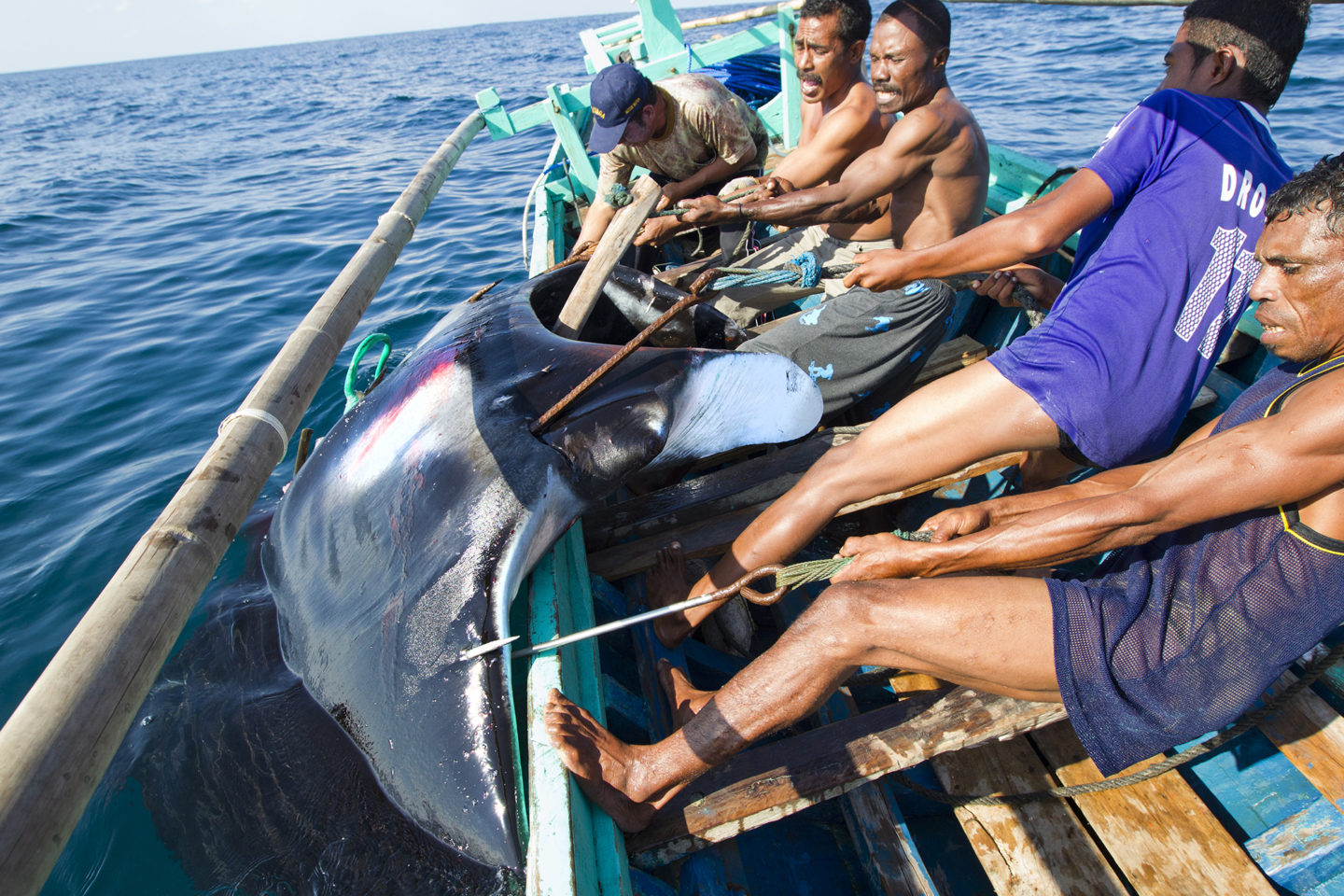
A local tradition
Hunting mantas has been a long-standing tradition in Lamakera. The species are commonly found in the plankton-rich waters around this remote community, where people rely on the sea for their livelihoods due to the relatively barren nature of the island’s soils. Part of an island chain along the southern edge of Indonesia, Solor is also on the migration path of a range of large marine species.
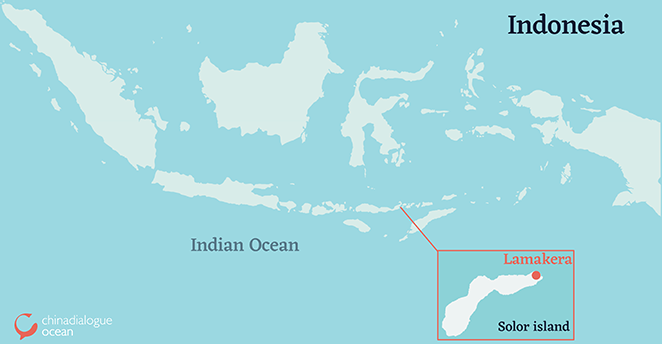
In the past, mantas were hunted mainly for food. Dried in the sun on lines of bamboo poles, the meat would be locally consumed or traded with neighbouring villages and islands for other necessities.
But in the early 2000s, mantas started to become commercially valuable in Lamakera due to a rapid growth in demand, mainly from China, for their gills, a part previously left to rot on the beaches.
Used in traditional medicine, ray gills are alleged to cure a wide range of health issues, from acne to cancer, although these qualities have not been scientifically proven. Manta gills are particularly highly prized due to their large size.
Syukur Seno, a former Lamakera fish buyer, remembers meeting the shark fin trader who first started collecting gills in the island community. He says the high prices offered for the gills encouraged a rapid increase in hunting, pushing catches well beyond customary limits.
“Beginning around 2005… (manta ray) cartilage cost 3,000 to 5,000 rupiah (21-35 US cents) per kilogramme” he said. The gills though “were 150,000 rupia (US$10.60) per kilogramme”.
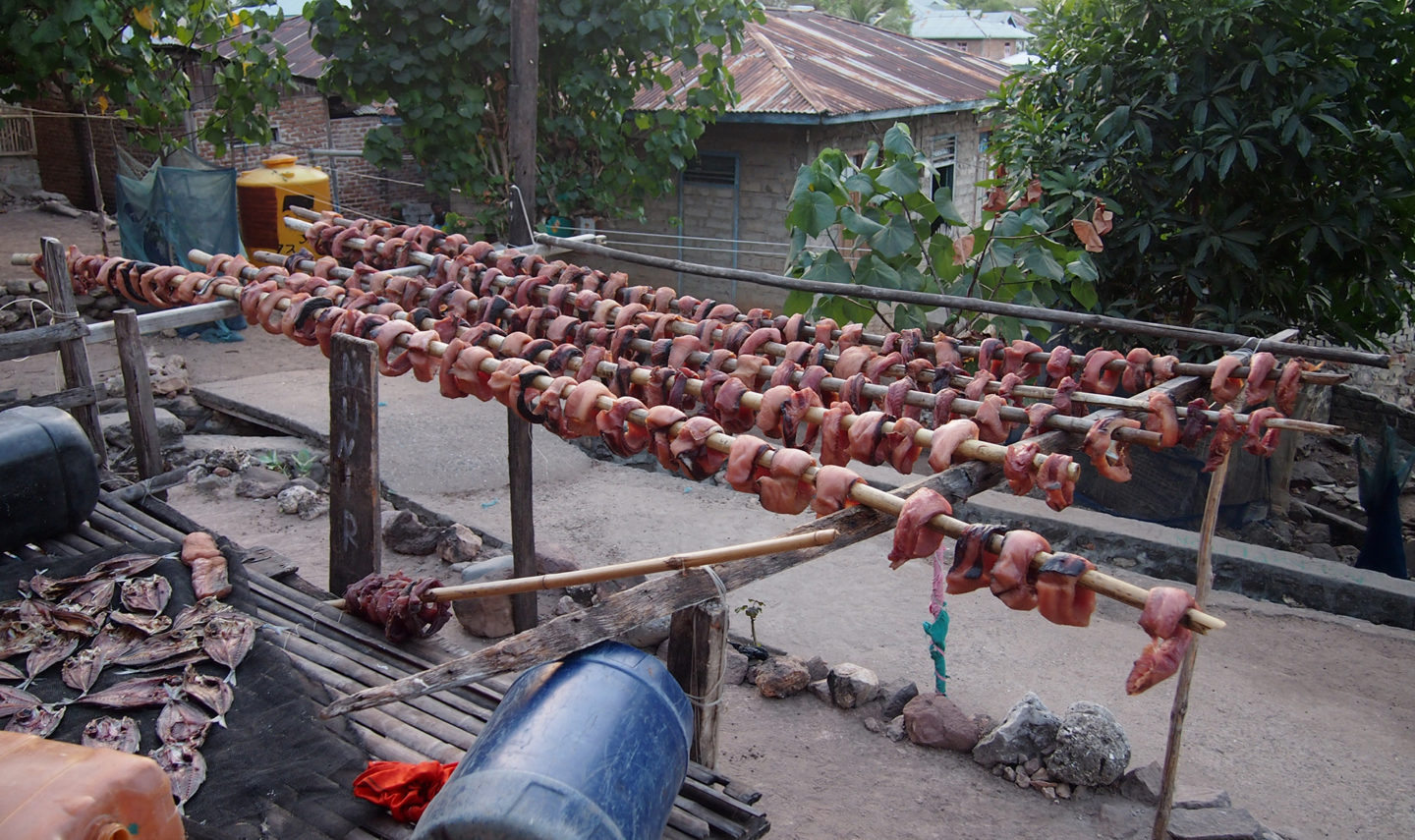
Enforcing the ban
Indonesia’s 2014 legislation protecting mantas not only removed this new income from the people of Lamakera, it also took away what had been a traditional food.
For former hunters like Umar, making a living has become a challenge. He explains that the money he now earns from catching tuna, marlin, snapper, mackerel and thresher sharks barely covers his costs. As well as fuel for his boat, he also has to replace his fishing nets every year.
“I buy used nets. The new ones are too expensive,” he says. Even used nets cost about 15 million rupiah (US$1,060). To pay for them, he has had to borrow money from a local bank, mortgaging his home and his boat. “It’s difficult. I sometimes miss repayments for a few months,” he admits.
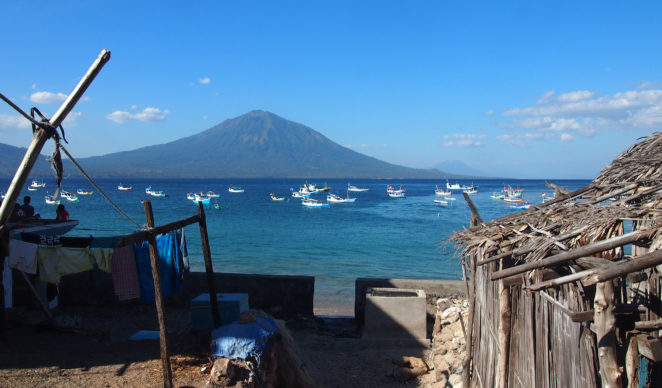
As such, the authorities have not found it easy to enforce the regulations in Lamakera. “They’ve only been in effect for five or six years, and they concern matters that are considered to be customary and a source of livelihood. The potential for conflict with the community is very high,” explains Sofi Mardiah of the Wildlife Conservation Society (WCS).
Efforts initially focused on preventing the trade in manta ray gills. Agustiawan, head of the central government’s Marine Biodiversity Surveillance Unit, remembers going undercover as a buyer in Lamakera soon after the new laws had been introduced. “We found six kilogrammes of dried gills, that must have been from six manta rays,” he said.
Over the following two years, several smuggling cases were uncovered and arrests made, mainly on the developed island of Java, from where collected gills can be transported to China.
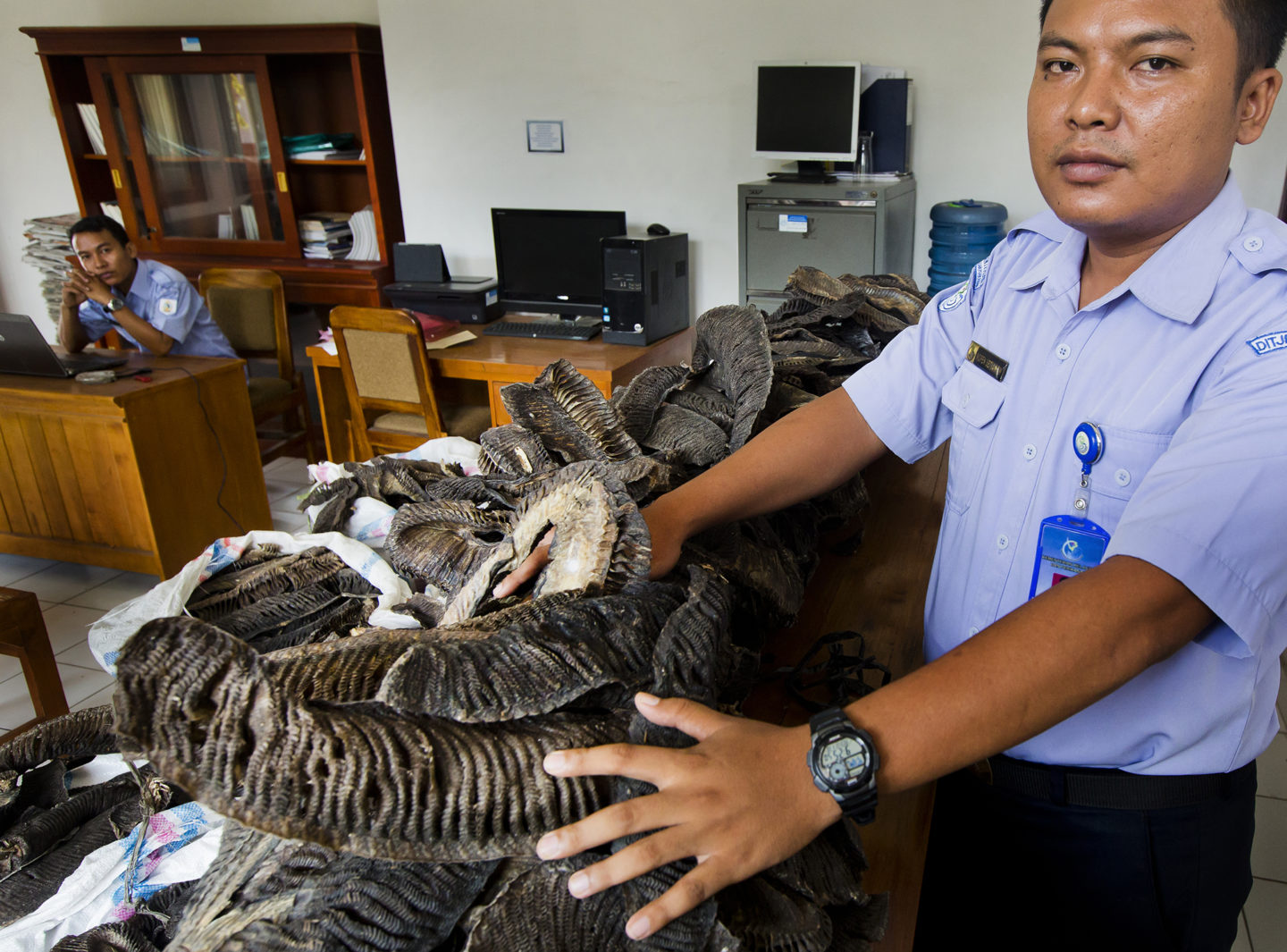
According to Mardiah, most of these gills were coming from Lamakera. To cut the trade off at its source, in 2016 the WCS cooperated with the provincial Marine and Fisheries Affairs Office and the Water Police to set up a daily patrol of the seas around Solor. These patrols have had a significant impact. “In the last two to three years, hunting specifically targeting mantas in Lamakera has disappeared or is rarely found. Even if there is hunting, it is usually carried out in secret at a much lower intensity and volume,” says Mardiah.
Apolinardus Yosef Lia Demoor, who manages the patrols for the local fisheries office based on the neighbouring island of Flores, agrees with Mardiah. “By late 2018, reports of manta catch dropped significantly,” he says. “The trade chain is almost broken now.”
But with enforcement efforts focusing on Lamakera, former fish buyer Seno comments that hunting may still be going on in nearby Lamalera on the island of Lembata. The people of Lamalera are well-known as whale hunters. Although there is no proof that they sometimes target mantas as well, the authorities believe they may be smuggling dried gills to Lamakera.
Demoor further warns that Lamakera still has a problem with bycatch. Although the local fishers do usually inform the patrols when they accidently catch a manta in their nets, the authorities suspect some cases go unreported.
Demoor recalls a recent incident that shows how strong local resistance to the ban continues to be: “One night in June of 2018, we received information that some Lamakera fishermen had caught three giant mantas. We went there the next morning, but the community shielded the fishermen who had caught the mantas and refused to hand them over to us. There was almost bloodshed.”
But is Lamakera still exporting manta ray gills? Mardiah asserts this is difficult to determine “without further investigation”. With the arrest of one of the community’s main traders and the collapse of market prices thanks to the official crackdown, little activity is being detected. So if trafficking is taking place, she says “it is certainly being done in secret and with extreme care to avoid being detected by the law.”
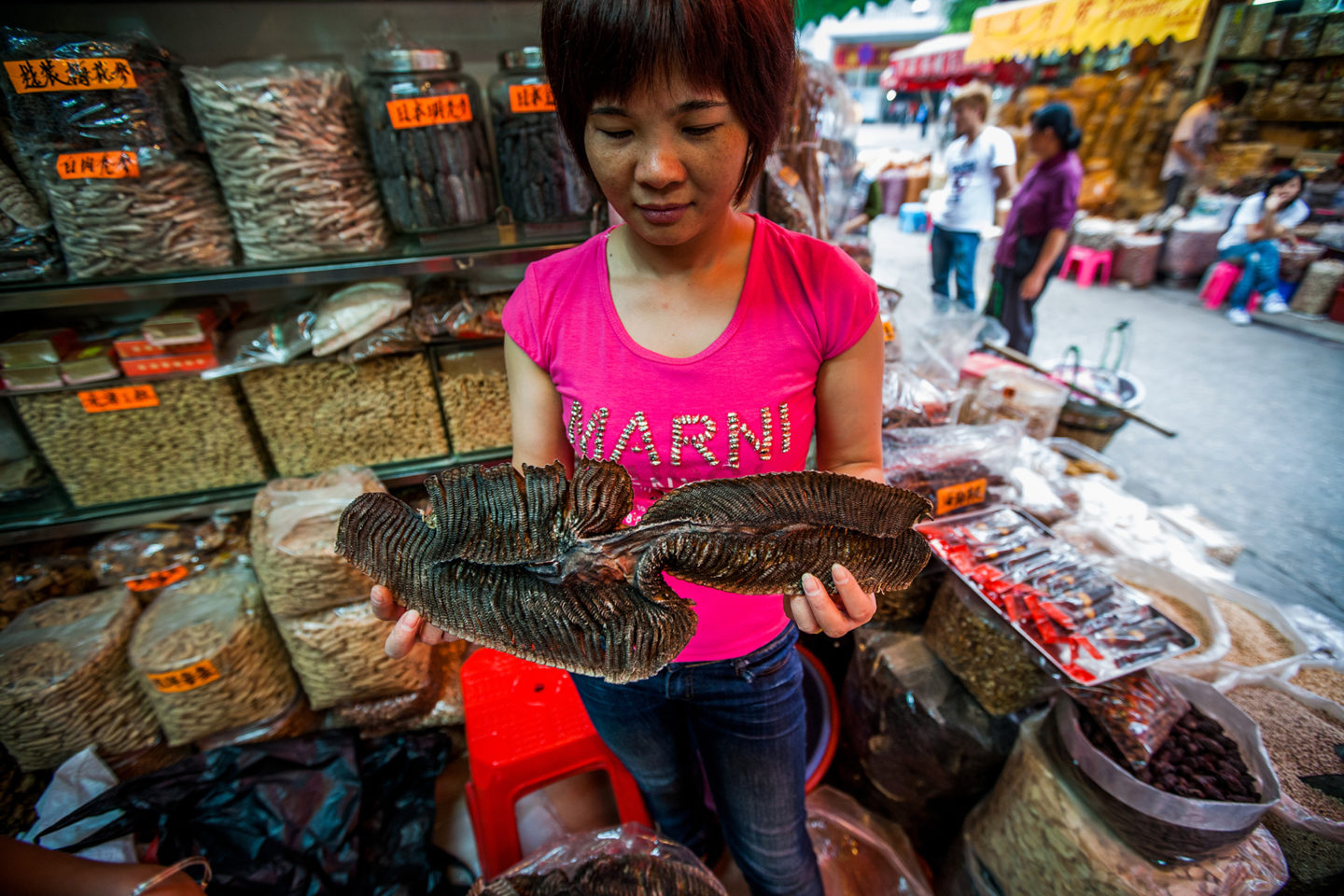
Alternative incomes
One of the arguments that persuaded Indonesia to bring in protections for manta rays in 2014 was their value for the tourism industry. A 2013 study estimated that manta watching generates around US$140 million in revenue every year across 23 countries, with Indonesia listed as one of the top spots.
Referencing the study, Misool’s Putra said that while a single manta ray, once caught, might fetch five to six million rupiah (US$350-420) at market, a living animal could make up to 12 billion rupiah for the tourism industry over its lifetime.
Putra explains that manta rays are very sociable and intelligent fish. “When we encounter this species, they interact with us and swim around us. It’s interesting for humans to connect with this creature. That’s why swimming with manta rays attracts tourism. It is non-extractive and has a higher economic value,” he says.

But Lamakera has so far rejected manta tourism as an alternative to hunting, fearing an influx of outsiders would be detrimental to their social values. Mardiah comments that: “When it comes to livelihoods, conservation efforts require a lot more time to change behaviours and find other sources of income.”
Aware that economic support is essential to the long-term success of the ban on hunting for mantas, Demoor’s office and the Misool Foundation are working together on a number of projects in Lamakera. “We are training the women to weave ikat [traditional cloth] and make tuna fish floss. We have also provided them with cool boxes and installed an ice machine to keep the fish they catch fresh,” says Demoor.
In addition, they have established a cooperative through which villagers can borrow money and receive a share of profits. Misool have also given the community a purse seine fishing boat, complete with nets, worth 800 million rupiah (US$56,700), and are currently training local fishers to use it.
These efforts have recently resulted in the establishment of a “sustainable fisheries collective”. More than 100 members of the Lamakera community have so far signed a pledge never to hunt manta rays again.
Others, however, continue to oppose the hunting ban. Hamka Songge is the head of one of the two villages that make up Lamakera. He argues that no equal alternative to the income villagers previously made from hunting mantas has yet been found. “Until there is a solution, the people here reject the regulations,” he says.

A new challenge
In 2016, CITES agreed to add all nine species of devil rays to Appendix II, giving them the same trade protections as the mantas. In line with this, Indonesia now strictly regulates devil ray exports, but there are as yet no controls on fishing and consumption within the country.
Devil rays belong to the same family as mantas and are similarly overexploited. As such, the Indonesian authorities are now considering protecting them in the same way as their larger cousins.
Demoor slumps back in his seat, clearly distressed at this prospect. “I will quit my job if mokung [spinetail devil rays] are given protection,” he says. Spinetails are one of the largest devil rays, and continue to be targeted by Lamakera’s hunters despite being listed as “near threatened” on the IUCN’s red list.
Demoor explains that he’s not against conservation efforts, but strong resistance from local communities makes law enforcement near impossible.
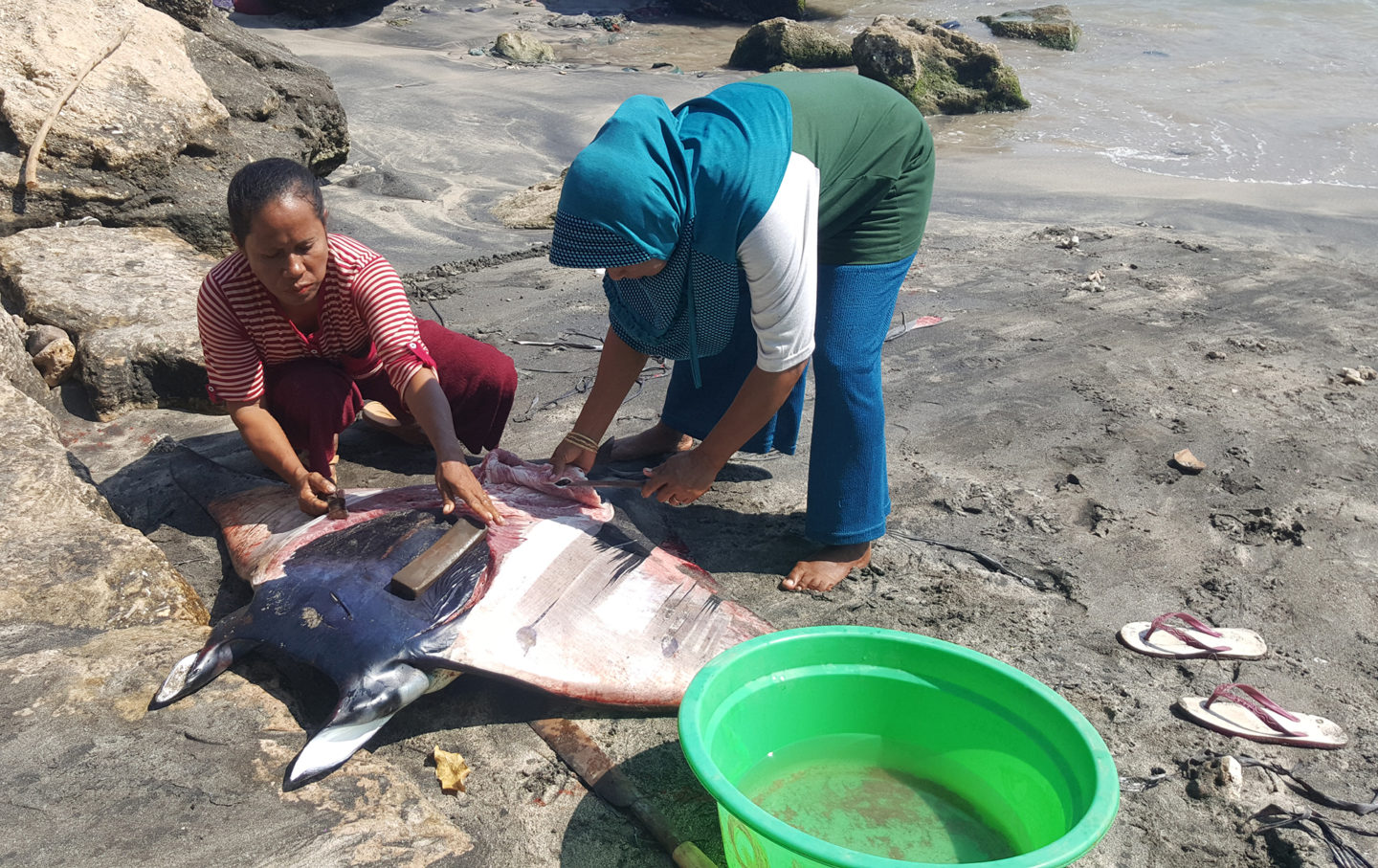
Overfishing is not the only threat facing mantas and devil rays. Misool’s Putra warns that climate change is shifting the distribution and availability of the plankton they feed on. Plastic pollution is another potential danger, as the rays can ingest microplastics mixed up with plankton in the water. All this makes efforts to protect these majestic species even more vital.
A great deal has already been done to help the manta rays. Misool reports that catches of the giant manta in Lamakera fell by 91.7% between 2015 and 2018. But, with CITES voting to protect even more species of ray and shark at its triennial summit this August, it’s clear that the fight to conserve the world’s marine megafauna is far from over.
